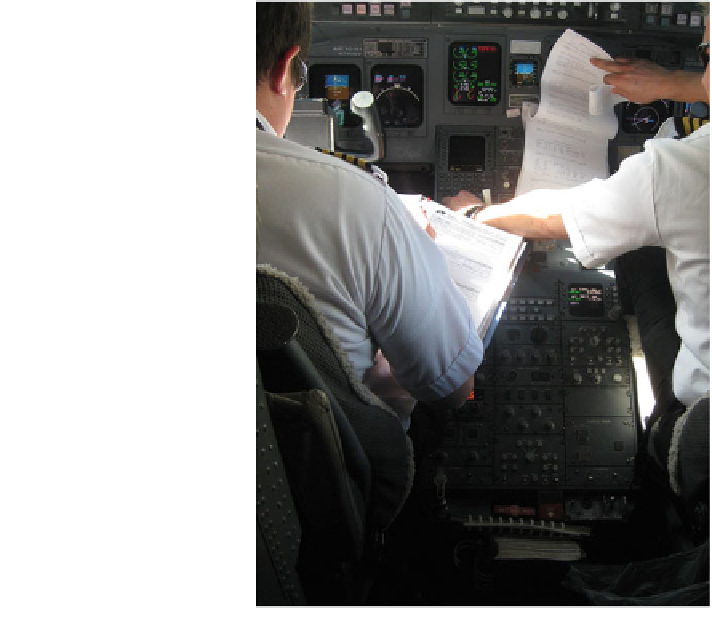Information Technology Reference
In-Depth Information
Fig. 8.4 Teams are
important for many
processes. Here, two pilots
are working together as a
team to prepare a plane for
flight, and, not shown,
interacting with ground
control and ATC
member, such as in an obstacle course, and there are other tasks where coordi-
nation is far more important than raw speed or talent (e.g., McNeese
2000
), and yet
other tasks where the best performances of individuals matter (e.g., gymnastics).
Industrial
and
organizational
psychology
is
an
area
that
will
provide
more
knowledge about how to improve teams through selection.
Olson and Olson (
2000
) suggest that collaboration readiness and technology
readiness are also important factors for teams interacting using technology. The
former relates to the willingness and ability of team members to collaborate. The
latter relates the technological know-how about the tools that will be used, including
tools that support synchronous (real-time) and asynchronous communication (and
collaboration) such as Skype, Twitter, Instant Messaging, video chat, and text
SMS—notably, the suitability of the tool itself, the match of its affordances to the
communication needs of the group, and the tasks (Bly and Churchill
1999
).
8.3.4 Team Structure and Composition
As the size of the team increases, some sort of structure will be needed to manage
communication and collaboration between members. This often takes the form of a

Search WWH ::

Custom Search